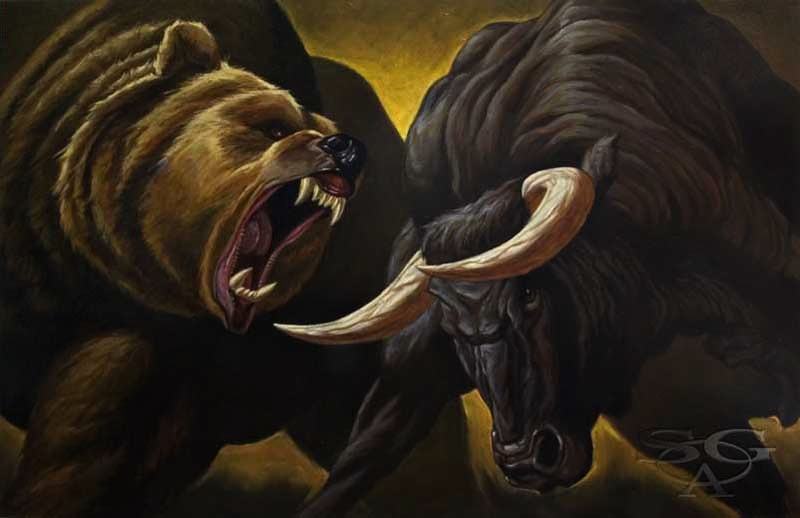
A couple of competing stories in the press this morning highlight one of the reasons that the AUD/USD rate has been stuck in a range for some time now.
In The Australian this morning we have the headline “China risk jangles nerves on high dollar” while over at the SMH we have “As might dragon roars so will Aussie”.
We have a market!
The reality is, however, that neither of these articles are inconsistent with each other. As I wrote yesterday, it is a question of time frames. Because, what we essentially have in these articles is China bulls and China bears but while the bears are worried about the here and now the bulls are focussed on the longer term.
Neither is inconsistent nor off the mark.
Take for example the bullish SMH Aussie article that quotes an old colleague of mine, Richard Franulovich, who is based at Westpac in New York,
“The real question is whether the rise of China is a bubble, because if its spectacular rise of the last decade is running out of legs then the Aussie dollar’s ascendancy is also on borrowed time,” he said. “We, for what it is worth, think that China’s rise has many years, if not decades, to play out.”
Some big investors are starting to worry about the Australian dollar, which has soared 75 per cent against its US peer since the depths of the financial crisis. These sceptics expect the currency, which recently hit its highest level against the greenback since being freely floated in 1983, to run out of fuel — or worse, to collapse.Their concern is that China, Australia’s biggest trading partner, could hit a major economic slowdown, cooling its enormous demand for prized exports such as iron ore, coal, and gas.
The Australian dollar “has gotten ahead of itself”, says Dori Levanoni, partner at First Quadrant, a Californian investment fund that manages some $US18 billion ($16.7bn) and has made bets against the Australian dollar in recent months.
Edinburgh-based Standard Life Investments, which manages $US250bn in assets, is scaling back its bets on Australian government bonds after buying aggressively early this year.
“The current global economic environment would have been fertile ground for a big pull-back in the Aussie dollar,” Franulovich said.
“People are concerned about China slowing, there are stresses in Greece, now Italy on the sovereign front, the US economy is looking soggy. A year or two or three ago the Aussie dollar would have collapsed quite sharply in this environment.
“In fact, in the past two to three months it has been tracking at $US1.06 to $US1.08 range, which is a real-life test of the Aussie dollar’s new safe-haven status.”
And it’s true that the Aussie has been holding in really well and the excuses were there for the sellers to take the ascendancy but I think it’s too early to declare the Aussie the south pacific gold standard. Just think about where the low points have been over the past couple of months. They have been synchronous with markets going to the brink. The Aussie has only come back because markets have come back, the Dow and S&P hold important trendline support, a politician somewhere makes soothing noises and the market steps back from the precipice and so on.
So I’m not convinced yet that even though I think the Aussie has been rerated by the market that it won’t, when or if markets do have a serious risk off event, resume normal production and fall precipitously.
The difference now is that I think there are enough long term China and India bulls that it won’t need to fall to 60 or 70 to find support it will probably be somewhat higher. Obviously it depends on the catalyst but while some may think the Aussie has “gotten ahead of itself” those same bods will also being buying again when it falls. The long term, commodity lead positives for the Aussie are just too compelling.